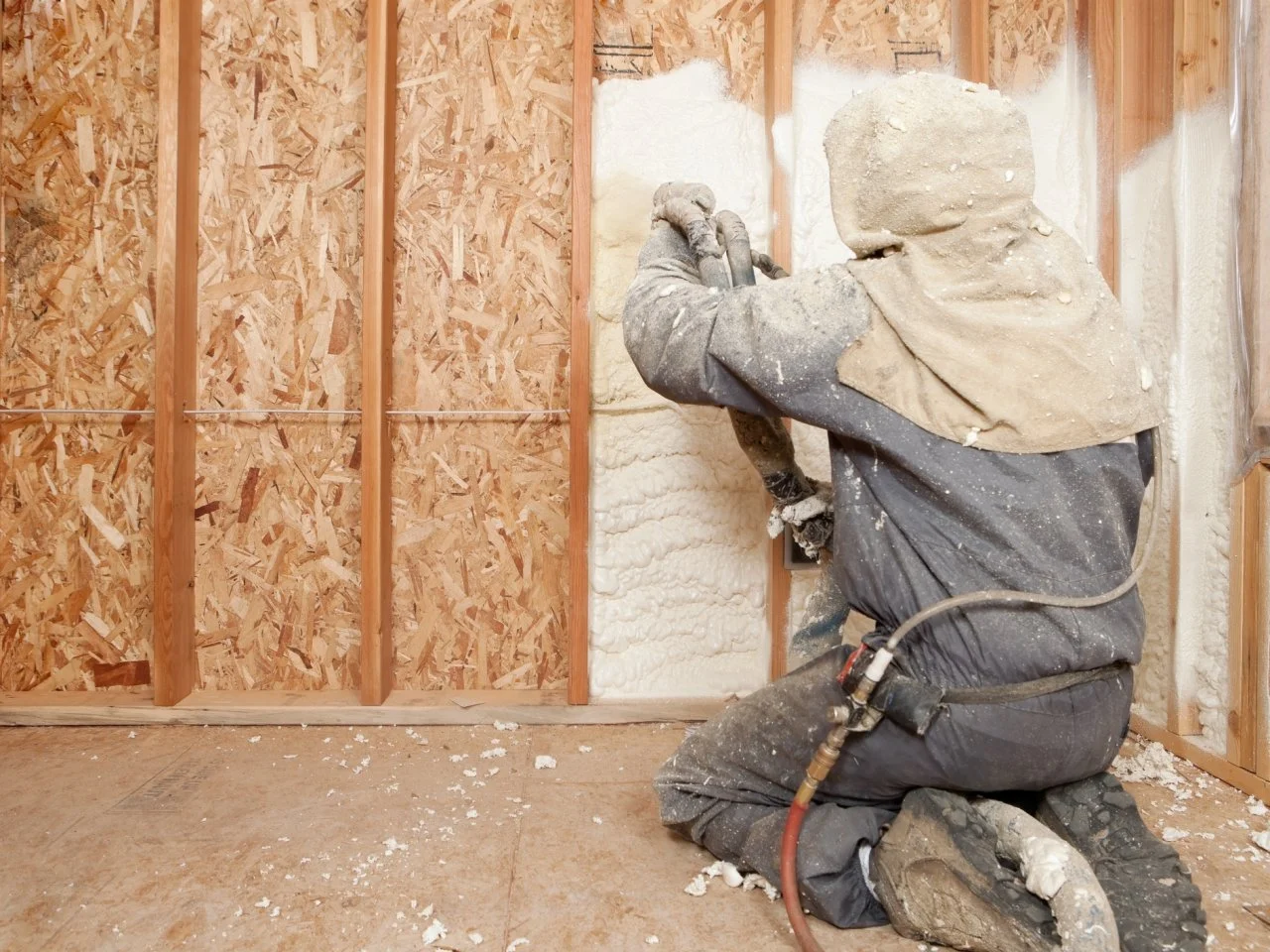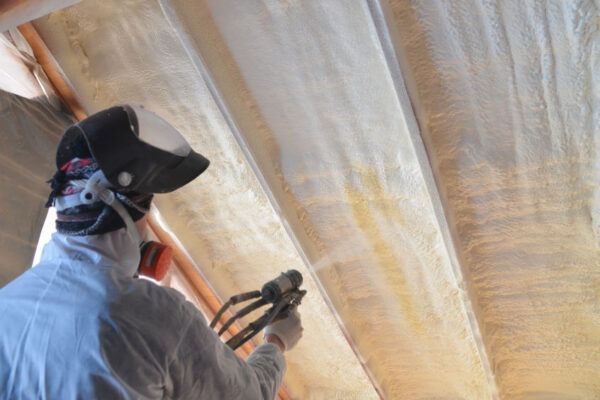Spray Foam: The Ultimate Remedy for Air Sealing and Insulation
Spray foam insulation has emerged as a leading remedy for efficient air sealing and thermal insulation, providing an unique combination of properties that set it apart from conventional techniques. Its capability to expand and fill gaps makes it especially reliable in stopping air leak, which can dramatically impact energy efficiency. Understanding the complete extent of its advantages, setup procedures, and contrasts with other insulation types is important for making notified decisions. As we explore these aspects, the implications for both new building and constructions and retrofits come to be significantly substantial. What aspects should affect your option?
What Is Spray Foam?
Spray foam is a functional insulation material that combines the principles of air securing and thermal resistance to improve power effectiveness in buildings. Composed mostly of polyurethane or various other similar substances, spray foam is applied as a fluid that broadens upon contact with surface areas, creating a strong, continual layer of insulation. This one-of-a-kind building permits it to load gaps, cracks, and spaces that standard insulation products might neglect, providing a superior air seal.
There are 2 main kinds of spray foam: open-cell and closed-cell. Open-cell spray foam is lighter and a lot more versatile, supplying excellent sound absorption and a reduced R-value per inch - Spray Foam. On the other hand, closed-cell spray foam is denser, giving a greater R-value, wetness resistance, and added architectural honesty to constructing components
The application procedure generally entails specialized devices, making sure a seamless application that follows various substrates, consisting of metal, wood, and concrete. This flexibility makes spray foam appropriate for both new constructions and retrofitting existing structures. Its ability to produce an impermeable barrier substantially adds to decreasing energy usage and boosting interior air quality, therefore making it a favored selection among home owners and builders alike.
Advantages of Spray Foam Insulation
One of the most substantial advantages of spray foam insulation is its phenomenal capacity to develop a constant air barrier, which successfully reduces energy loss. Unlike traditional insulation materials, spray foam expands to fill gaps and splits, making sure that air leak is considerably reduced. This particular not only enhances power effectiveness however additionally results in lower utility costs with time.
In addition, spray foam insulation offers exceptional thermal resistance, adding to a much more stable indoor setting. Its high R-value per inch enables for efficient insulation in confined rooms, making it excellent for attic rooms, walls, and crawl spaces. The moisture-resistant homes of spray foam help protect against mold and mildew development, promoting much healthier living conditions.
An additional important benefit of spray foam insulation is its sound-dampening top qualities (Spray Foam). It efficiently reduces sound transmission between spaces, creating a quieter and a lot more comfortable home atmosphere. The resilience of spray foam likewise stands out, as it does not droop or settle gradually, maintaining its efficiency throughout its life-span
Exactly How Spray Foam Functions
Understanding exactly how spray foam insulation functions is vital for valuing its effectiveness in air securing and thermal resistance. Spray foam insulation contains two key components: isocyanate and polyol resin. When these parts are mixed, they go through a chain reaction that causes the material to broaden swiftly, creating a dense foam that loads fractures, voids, and cavities.
As the foam expands, it complies with surfaces, developing an impermeable seal that significantly reduces air infiltration. This characteristic makes spray foam insulation extremely reliable at protecting against drafts and moisture penetration, which can result in energy loss and damage in time. Furthermore, the closed-cell variation of spray foam offers remarkable thermal resistance as a result of its stiff framework, efficiently lessening heat transfer.
The special residential or commercial properties of spray foam allow it to adapt irregular surfaces, ensuring detailed insurance coverage and a smooth barrier. Consequently, spray foam insulation not only enhances power performance yet additionally adds to enhanced indoor air quality by why not try this out reducing the buildup of irritants and contaminants. Inevitably, recognizing the auto mechanics behind spray foam highlights its role as a superior selection for insulation and air securing in both domestic and commercial applications.
Setup Process Introduction

Before setup, the room must be effectively cleaned and prepped, guaranteeing that surface areas are cost-free from particles, dampness, and dust. Due to the fact that contaminants can compromise adhesion and overall performance, this step is important. When the location is prepared, the application includes blending both elements of the spray foam, which broadens upon get in touch with and loads voids properly.
Educated specialists need to perform the installment, making use of customized tools to make certain consistent insurance coverage and ideal thickness. Safety and security precautions, including wearing protective equipment and ensuring proper air flow, are vital throughout this procedure. After application, the foam normally remedies rapidly, forming a strong barrier that boosts energy efficiency.
Comparing Spray Foam to Conventional Insulation
When evaluating insulation choices, spray foam insulation stands out in comparison to typical materials such as fiberglass and cellulose. Unlike fiberglass and cellulose, which can permit air infiltration, spray foam increases upon application, filling up voids and gaps to develop a closed seal.
In addition, spray foam offers a greater R-value per inch than conventional insulation kinds, offering even more reliable thermal resistance in a thinner profile. This particular is particularly valuable in areas with minimal cavity depth. In addition, spray foam is resistant to wetness and mold and mildew growth, which can be a considerable worry about cellulose and fiberglass, especially in moist environments.
Nevertheless, spray foam insulation commonly carries a higher in advance price than its traditional counterparts. Home owners must evaluate this first financial investment against long-term energy cost savings and efficiency advantages. Ultimately, while both insulation types serve their objective, spray foam arises as a more sophisticated option for modern-day insulation needs, particularly in terms of air sealing and thermal effectiveness.

Conclusion
In summary, spray foam insulation represents a highly effective service for achieving ideal air sealing and thermal resistance. Its special buildings, consisting of moisture resistance and audio dampening, make it ideal for various applications in both brand-new buildings and retrofitting jobs (Spray Foam). Although the first prices might be higher contrasted to conventional insulation materials, the lasting advantages, such as considerable power cost savings and improved indoor air top quality, validate the financial investment and highlight its value in modern-day building practices.
Spray foam insulation has actually emerged as a leading remedy for efficient air securing and thermal insulation, providing a special mix of residential properties that set it apart from standard methods.Spray foam is a functional insulation material that integrates the concepts of air sealing and get redirected here thermal resistance to boost energy effectiveness in structures.When assessing insulation alternatives, spray foam insulation stands out in comparison to standard products such as fiberglass and cellulose. Ultimately, while both insulation kinds offer their objective, spray foam emerges as a much more innovative service for modern-day insulation needs, especially in terms of air securing and thermal efficiency.
In summary, spray foam insulation represents a very effective Extra resources service for attaining optimum air sealing and thermal resistance.